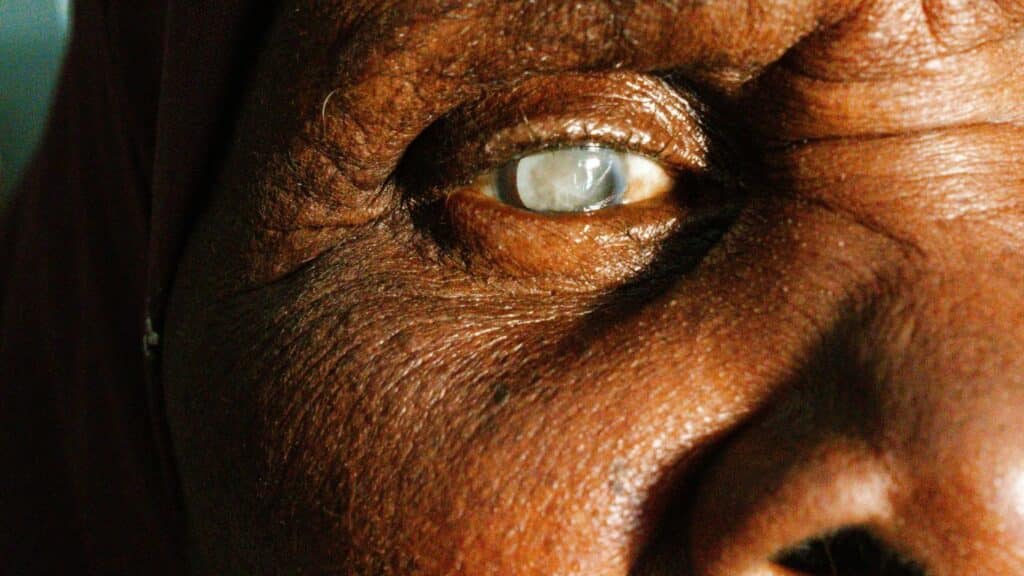Whether you're squinting to read the small print on your morning coffee label or finding that distant road signs look more like colorful blurs, you're not alone in your visual struggles. In the United States alone, nearly 30% of the population grapples with nearsightedness, also known as myopia, while 41.6% face farsightedness (hyperopia). These conditions, part of a group known as refractive errors, occur when the shape of your eye doesn't bend light correctly, resulting in blurred vision either up close, far away, or both.
Enter LASIK, a game-changer when it comes vision correction. This surgical procedure, which has seen remarkable advancements since its introduction, uses laser technology to correct these refractive errors, offering a potential goodbye to glasses and contact lenses for many. Its evolution over the years has made it safer, quicker, and more effective, opening up the doors to clear vision for millions. If you're tired of the daily inconveniences of farsightedness or nearsightedness and curious about this modern medical marvel, then you are in the right place. This blog post sheds light on how LASIK works, its suitability for different eye conditions, and what you can expect from the procedure.
Farsightedness, or hyperopia as it's known in the medical world, might sound a bit counterintuitive at first. Imagine this: you can see the billboard across the street just fine, but trying to read a text message on your phone? That's a blurry mess. This happens because, in a farsighted eye, the eye focuses light behind the retina instead of directly on it. Now, why does this happen? Think of your eye as a camera. For crisp vision, the eye's shape must precisely direct light onto the retina. In individuals with hyperopia, their eyes might be slightly shorter than average, or the cornea could be less curved. Genetics play a big part here—so if your parents needed reading glasses early on, you might find yourself in the same boat.
The signs of farsightedness tend to be pretty straightforward but can range from mild to severe. If you're constantly squinting to read, experience eye strain after close tasks, or if your headaches feel like they're on a schedule—post-reading or computer work—hyperopia might be knocking on your door. For kids, undiagnosed farsightedness can be particularly sneaky, leading to difficulties in school, especially with tasks that require sustained focus up close. Interestingly, a study highlighted that a significant percentage of children diagnosed with learning difficulties were found to have uncorrected refractive errors, including farsightedness.
Getting to the root of hyperopia isn't a Herculean task. It typically involves a comprehensive eye examination by our medical team at TVLC. This isn't just your standard vision check for a new pair of spectacles. The exam dives deep, evaluating the eye's health, how well your eyes work together, and, importantly, pinpointing your prescription through a refraction assessment. This process might involve eye drops to dilate your pupils, allowing the doctor a clear view of the eye's interior and making it easier to diagnose refractive errors.
Do You Think You Might Be Farsighted?
Speak With Us Today And Let Us Help You See Better!
LASIK is a groundbreaking procedure that has changed the lives of countless individuals, offering them a newfound clarity sans glasses or contact lenses. But how is this visual win achieved?
At its core, LASIK (which stands for Laser-Assisted In Situ Keratomileusis, in case you were curious) involves reshaping the cornea to correct the refractive error causing your nearsightedness or farsightedness. Using a highly specialized laser, surgeons can precisely remove corneal tissue, changing its shape so that light rays can be properly focused on the retina. The beauty of this procedure lies in its precision. Modern LASIK surgery could achieve 20/20 vision or better in patients with either myopia or hyperopia, a testament to its effectiveness.
Not everyone can simply walk into a LASIK clinic and walk out without their glasses, however. Suitability is key. A thorough assessment by our professional LASIK surgeons at TVLC, which includes evaluating the thickness of your cornea, the stability of your vision, and your overall eye health, is essential. Conditions like severe dry eye, keratoconus (a thinning and cone-like bulging of the cornea), or a history of ocular herpes make LASIK eye surgery a less-than-ideal option.
Like any surgical procedure, the LASIK procedure isn't without its risks, though they are comparatively low. Some patients experience:
However, the benefits, particularly for individuals who've spent a lifetime behind corrective lenses, can be life-changing. Besides the obvious perk of improved vision, many report a boost in self-confidence and a greater ability to engage in activities that were difficult or impossible before surgery.
If you've been nodding along and imagining a life free from the daily use of reading glasses, you're probably curious to know, "Can LASIK correct farsightedness?"
The ability of LASIK lies in its ability to precisely sculpt the cornea, which in the case of farsighted individuals, means steepening its curvature. This precision is achieved through a sophisticated laser that vaporizes a minuscule amount of corneal tissue in a carefully controlled pattern. By increasing the cornea's curvature, LASIK helps focus light rays directly onto the retina rather than behind it, clearing up the blurry close vision that farsighted people struggle with. It's like reshaping a camera lens for sharper focus, but in this case, the lens is your eye.
The success story of LASIK in treating farsightedness is backed by robust research and countless satisfied patients. Studies, such as one conducted at The Eye Institute of Utah, show high satisfaction rates and improved vision quality in the majority of hyperopic patients post-LASIK. However, it's not a one-size-fits-all solution. Success rates can vary based on the degree of farsightedness and the individual's eye structure. While mild to moderate hyperopia can often be corrected to 20/20 vision, those with severe farsightedness may face limitations.
If you are asking, "Is LASIK worth it?", the sticker shock of LASIK surgery is often the first hurdle for many. On average, LASIK cost in Texas can average $3,000 per eye, a price tag that can induce more squinting. However, when viewed through the lens of long-term savings—bidding farewell to yearly eyewear updates, prescription lenses, and contact supplies—the investment can become significantly more palatable.
Plus, the true measure of LASIK's worth for the farsighted lies in its profound impact on quality of life. Freed from the daily annoyances and limitations of corrective lenses, patients report significant boosts in self-confidence, participation in outdoor and recreational activities, and an overall increase in life satisfaction.
After shining a light on farsightedness and the wonders of LASIK in addressing it, it's only fair we adjust our focus towards its counterpart—nearsightedness. Just like two sides of the same coin, nearsightedness presents a unique set of challenges and insights into our eye health.
Nearsightedness, or myopia, is essentially the obstacle to clear distant vision. Imagine trying to read a street sign, and it appears frustratingly blurry while reading a book is no trouble at all. This condition occurs when the eyeball is slightly longer than normal or when the cornea is too curved. This shape difference causes light to focus in front of the retina rather than directly on it, causing you to only have near vision. Studies suggest that genetics play a dominant role—if your parents needed glasses to see far away, chances are you might too. But don't pin it all on genetics; lifestyle factors, particularly spending a lot of time indoors or in front of screens, can exacerbate the condition. A study highlights a notable increase in myopia cases among children during the pandemic, closely tied to increased screen time and reduced outdoor activities.
The hallmark symptom of nearsightedness is blurry vision when looking at distant objects, while close-up vision quality remains sharp. This can make activities like driving, recognizing faces, or seeing a chalkboard from the back of the classroom a blurry challenge. It's not just about blurred street signs; myopia can strain the eyes, causing headaches and eye fatigue, especially after prolonged focus on distant objects. This visual strain can significantly impact daily activities and overall quality of life, underscoring the importance of recognizing symptoms early.
Diagnosing nearsightedness is straightforward. It typically involves a comprehensive eye exam with your professional eye surgeon at TVLC. This exam not only includes reading from an eye chart but also using devices that measure the shape and focusing power of the eyes. The aim is to determine the degree of nearsightedness and prescribe corrective lenses or other treatments to sharpen your distance vision. Early diagnosis is key, particularly for children, as it can significantly affect academic performance and social development.
Do You Think You Might Be Nearsighted?
Speak With Us Today And Let Us Help You See Better!
Both nearsighted and farsighted individuals seek LASIK surgery for a common vision: living a life free from the constant dependence on corrective lenses. The underlying technology and the goal—to reshape the cornea for clearer vision—remain the same. However, the laser is used differently to correct the specific refractive error: for nearsightedness, it flattens the too-steep cornea, while for farsightedness, it aims to steepen a too-flat cornea. It's like sculpting clay, but with pinpoint accuracy, thanks to advancements in laser technology.
Not everyone can immediately leap into LASIK surgery, be it for nearsightedness or farsightedness. The criteria ensure that the surgery is not only effective but safe for the individual. Potential candidates must be at least 18 years old, with a stable eye prescription for at least a year—indicating that their vision has stopped worsening. A thorough examination by an eye care professional is crucial to assess the health of the eye, the thickness of the cornea, and other factors like the presence of any eye diseases that could rule out LASIK as an option. For instance, individuals with a thin cornea or severe dry eye syndrome might be advised against the procedure, as noted in guidelines by the American Academy of Ophthalmology.
You may be wondering, "Can LASIK correct nearsightedness and farsightedness at the same time?"
The short answer is, absolutely, LASIK can tackle both nearsightedness and farsightedness simultaneously, although the scenario is a bit special. Picture this: one of your eyes is a champ at reading fine print up close but blurs out the movie screen, while the other eye does the exact opposite, nailing distant signs but squinting at your smartphone. This unique situation, where one eye is nearsighted and the other is farsighted, is quite the spectacle (pun intended)! In such cases, undergoing LASIK means you're essentially signing up for a tailor-made adjustment on each eye. One eye will undergo a procedure to flatten a too-steep cornea, and the other, a bit of a sculpting job to steepen its too-flat counterpart.
In the end, whether you're struggling to see the leaves on trees from afar or the words in a book up close, remember, LASIK offers a glimmer of hope for crisp, clear vision. It's your first step toward potentially ditching those specs or contact lenses for good.
Got questions or think LASIK might be right for you, whether for nearsightedness, farsightedness, or a bit of both? Don't hesitate—reach out to us at The Vision Laser Center (TVLC) today and see how we can help brighten your world.



